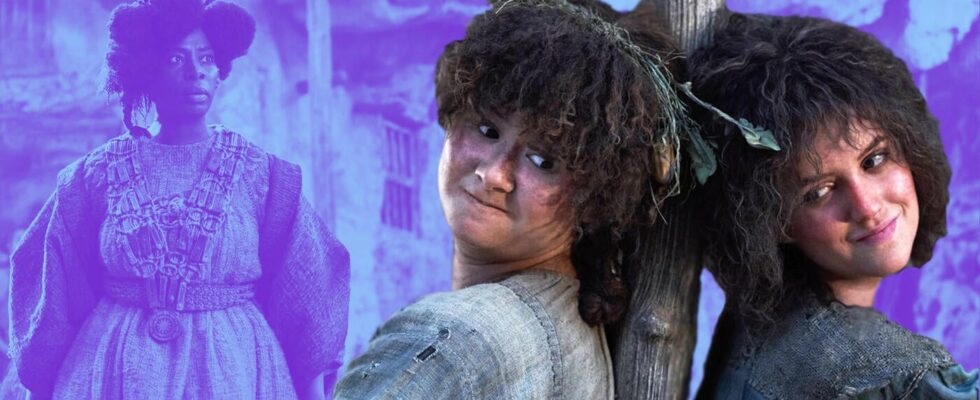Amazon’s fantasy series The Lord of the Rings: The Rings of Power introduced us to the Hobbit precursor of the harfeet in season 1. Anyone who thought that the series had already exhausted its halfling potential should count the hairs on their own feet again, because the episode “The Elder” now introduces the harfeet alongside Tom Bombadil. Warning, spoilers for season 2, episode 4 follow.
What is the Hobbit difference between staring and hare-feet in Tolkien?
In episode 4 of season 2, the storm-blown hare-footed Nori (Markella Kavenagh) and Magsie (Megan Richards) meet new acquaintances: Merimac (Gavi Singh Chera) takes her to his clan of the Stares, which is controlled by the “Gund” Gundabale (Tanya Moodie) But apart from their slightly different ear shape, the new halflings also differ from the nomadic Harfeet in another way: The Stares are sedentary and live in the caves of a canyon.
Strictly speaking, we have not yet met any “real” hobbits in The Rings of Power. Instead, the series represents the small people with the Hobbit ancestorsof which JRR Tolkien 3 types thought up:
Does this mean that we will also get to know the third Hobbit species, the Fallowskins, in the course of the 5 planned seasons of The Rings of Power? For Lord of the Rings fans, it is certainly interesting to know: Before his transformation into Gollum Sméagol was a starer.
The Sûzat: How The Rings of Power explains Hobbit differences and refers to the Shire
In Amazon’s Lord of the Rings series, the Harfeet are introduced as nomads, who are constantly on the move as a wandering people. After the encounter between the Harfeet and the Stares, Nori realizes that they have a common origin with the Stares: Apparently, under a certain Rorimas Lochner (Rorimas Burrows), the ancestor of the Harfeet tracker Sadoc (Lenny Henry) from season 1, a few pre-hobbits set out to find a home for the halflings. to find a paradisiacal new home: with gently flowing rivers full of fresh water and soft hill soil for building caves. Over time, however, the wandering hobbits forgot the reason for their journey, which has now been rediscovered.
The target can only be the lush green hills where Bilbo, Frodo and Co. later live in Hobbiton. Even the name for it is mentioned in episode 4 of season 2: Sûzat means Shire (English: Shire) in Westron, the shared native language of Men and Hobbits. So it looks as if the two Hobbit peoples now have a new shared mission.
The Rings of Power in the podcast: Is season 2 of the Lord of the Rings series worth watching?
After a two-year break, Amazon’s big fantasy series The Lord of the Rings: The Rings of Power is back. We discuss what makes Season 2 different and whether the first three episodes are convincing.
At this point you will find external content that supplements the article. You can display it and hide it again with one click.
After the revelation of the villain Sauron, the cards in Middle Earth are reshuffled. Esther and Mario view the result of the second season with very different perspectives. A spoiler-free first podcast part is followed by a series review with a more in-depth Lord of the Rings analysis.
